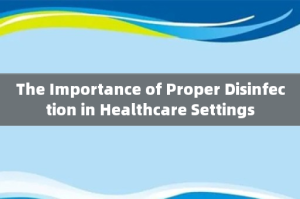In the medical field, the significance of correct and effective disinfection cannot be overstated. History has shown numerous real-life medical incidents resulting from the neglect of proper disinfection protocols. This article aims to shed light on such events, provoke thoughtful consideration, and emphasize the need for preventive measures and overall improvement in disinfection practices.
Importance of Disinfection in Healthcare Settings
Proper disinfection is paramount in healthcare settings to prevent the transmission of infectious diseases and ensure patient safety. Hospitals and clinics are potential breeding grounds for harmful pathogens, and without adequate disinfection, these environments become a serious threat to patients, medical staff, and visitors.
Historical Medical Incidents Caused by Inadequate Disinfection
Throughout history, there have been several tragic incidents where the lack of emphasis on disinfection led to severe consequences. For example, in the mid-19th century, Ignaz Semmelweis, a Hungarian physician, discovered that the high mortality rate among mothers in the maternity ward was due to infections transmitted by doctors who did not practice proper handwashing. His findings were met with skepticism, and it took years for hand hygiene to be recognized as a critical preventive measure.
Similarly, during the early 20th century, the rapid spread of infections in hospitals was attributed to improper sterilization and disinfection of medical equipment and surfaces. These incidents resulted in countless lives lost, leading to significant advancements in disinfection practices.

Lessons Learned and Preventive Measures
From these historical incidents, we can draw essential lessons:
-
- Meticulous Hygiene Practices: Healthcare professionals must follow rigorous hand hygiene protocols to prevent cross-contamination.
- Proper Disinfection of Equipment: Medical instruments and equipment should undergo thorough disinfection and sterilization after each use to eliminate potential pathogens.
- Surface Disinfection: Regular and effective disinfection of surfaces, including hospital rooms and patient areas, is crucial in preventing the spread of infections.
- Personal Protective Equipment (PPE): Proper use and disposal of PPE, such as gloves, masks, and gowns, are vital to minimize the risk of infection transmission.
- Education and Training: Healthcare personnel should receive continuous education and training on disinfection best practices to maintain a safe medical environment.
Conclusion
In conclusion, the importance of proper disinfection in the medical environment cannot be ignored. History has shown us the dire consequences of neglecting this crucial aspect of healthcare. By learning from past mistakes, implementing preventive measures, and improving disinfection practices, we can ensure a safer and healthier medical environment for both patients and healthcare providers. Vigilance in disinfection is a shared responsibility, and it is only through collective efforts that we can truly safeguard public health and well-being.